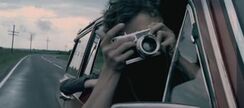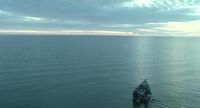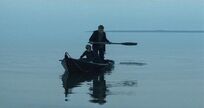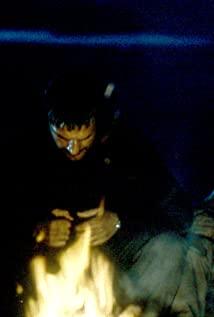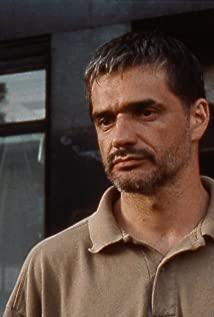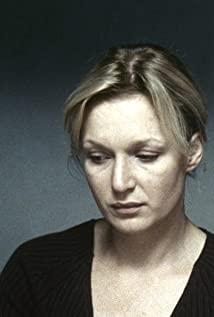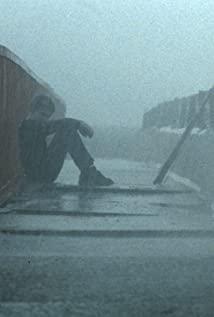We are prone to the distress that what we see in relation to the larger picture of the world can only be verified through one side, and it is destined to be superimposed, or overlaid on very different interpretations.
The bedroom door opened, and the camera looked at the body of a sleeping father, covered in smooth blue satin. What the director Andrea Sagintsev saw was the usual work scene of an actor. It was the work of the 15th century Italian painter Andrea Mantegna's "The Dead Christ", or he kept it in his heart. A variant of the debugged idea? It is difficult for us to figure out, except to realize that this is the introduction of a family movie, and how do we, the audience, view this scene?
The use of this perspective is echoed at the end of the film. The dead father's body is placed on the boat, the tip of the boat is heading towards the sky, the camera slowly moves from the soles of the feet to the top of the head, watching him drifting into the depths of the sea, sinking and disappearing.
In order to defend the final "return", the film's interpretation of fatherhood retains a sense of unknown and mystery. He came back into the family suddenly, and the children could only hear and watch from a distance as to who he was. They recognize the stranger in front of them through innate attachment tendencies and resistance. Old family photos are tucked into heavy picture books in dusty wooden boxes, echoing Old Testament legends of Abraham. They stared at him, the seriousness, the unfamiliar car that held some kind of opportunity, the legitimacy of the middle of the table, the oppression of the meat and wine handed.
Cameras and telescopes in the film complement a more modern perspective. The images captured by the eldest son Andre through the camera are a collection of tender memories of inevitable endings, capturing certain, steady, quiet moments in motion. The younger son, Ivan, looked out through the binoculars, and his line of sight stretched, but the place where his father was was messy and in a hurry. A pair of eyes behind the telescope is exploring, like anger, blame, doubt, and the long-awaited courage must find an outlet for appearances. Along the way, the two take turns to write a diary is a more direct complaint and record, in order to confirm their identity, in order to prove the relationship between the person in front of them and themselves.
But it's not just the twisted son's reverence for the father; the father also watches the child, his needs and concerns manifest in the rearview mirror, the blinds, and the attention on the shore. His expression was fragile. In the film, the father commands the children only in convenient language. Emotions seem to be forced to be compressed into a few days, thus turning into coercive power and indifference that has nothing to do with fatherly love, which naturally cannot be understood by children.
Another way to control children is to ask them to complete a task within a specified time. This kind of dominance tries to destroy the will of the individual, even if it is only three people traveling, the minority must obey the majority. This is the modern view of time, which scientifically counts the minute and the second, hinders the sense of time, and hinders the return to the ancient, holistic. The desire of father and son to live in harmony together is undermined as this soil of wholeness ensures the growth of the seeds of human emotion.
Also a Russian director, if Tarkovsky's door is opened for the private heart of the individual, the entrance to the subconscious, the broken ruins, the traction of desire, and the gloomy trap, then it seems to continue the consistency of the picture. The doors and windows of Sarkinsaif in his paintings are looking at the individual in the whole from the outside. He expresses distance and division, which is the hope of melancholy, sinking, sadness and unreachable embrace.
However, he also asks about the inevitable contradictions, like those that exist outside of measurable time, distant and indistinct from us. The father retrieved the deeply buried locked iron box stained with rust and stains from the bottom of the log cabin. At this time, outside the window, the children came from the fresh and bright lawn far away, as if from a landscape. out of the painting. The sight in the mind is longer, irregular, trembling, and chaotic. Even running fast in the woods, thinking that there will be a definite direction and goal. In reality, however, the act of running runs through the film, and anxiety, fear, and what is missing must fill the action thus emphasizing itself rather than its purpose. In addition, the father was chasing the young son in the forest. When the camera moved quickly, the father and son were so similar, turning the father into an anxious child. What he was looking for may have experienced the emotions of twelve years, but in a short period of time. A few days of reunion is unbearable.
The dead seabird on the ground in the woods is like a tragic prophecy, and the allegory suggests a strong connection to another level. At the beginning of the story, the child is afraid of jumping into the sea like a companion. He is entangled by the fear of the body disappearing into the deep sea and the fear of death. The appearance of his father gave him the flame of bravery. He dared to reject the rules set by his father, but because of the sudden appearance of these rules, he became a source of resistance.
The slightest freedom gained under the protection of the father is displayed on the faces of the children, which is intended to reduce this estrangement. For a few days, their adventures gave them a sense of assurance, whether it was going somewhere else together or getting out of danger. But this sense of certainty is small, and it is difficult to bridge the shortcomings of the years.
The top of the observation tower has a more comprehensive new view, empty and surrounded by water, which also means endless danger. The fall of the father is the externalization of the deepest fear in the child and the sacrifice of substitution, and it is then overshadowed by greater daze and grief. The image of the father fades away in the deep sea and belongs to where he came from. The children must also withdraw from the uninhabited island heart and walk on the way home alone, although they are only tired, scattered and lost. The family affection and unity that I originally wanted to obtain are connected with the sacrifice of the father, such as the relationship between life and death.
View more about The Return reviews



